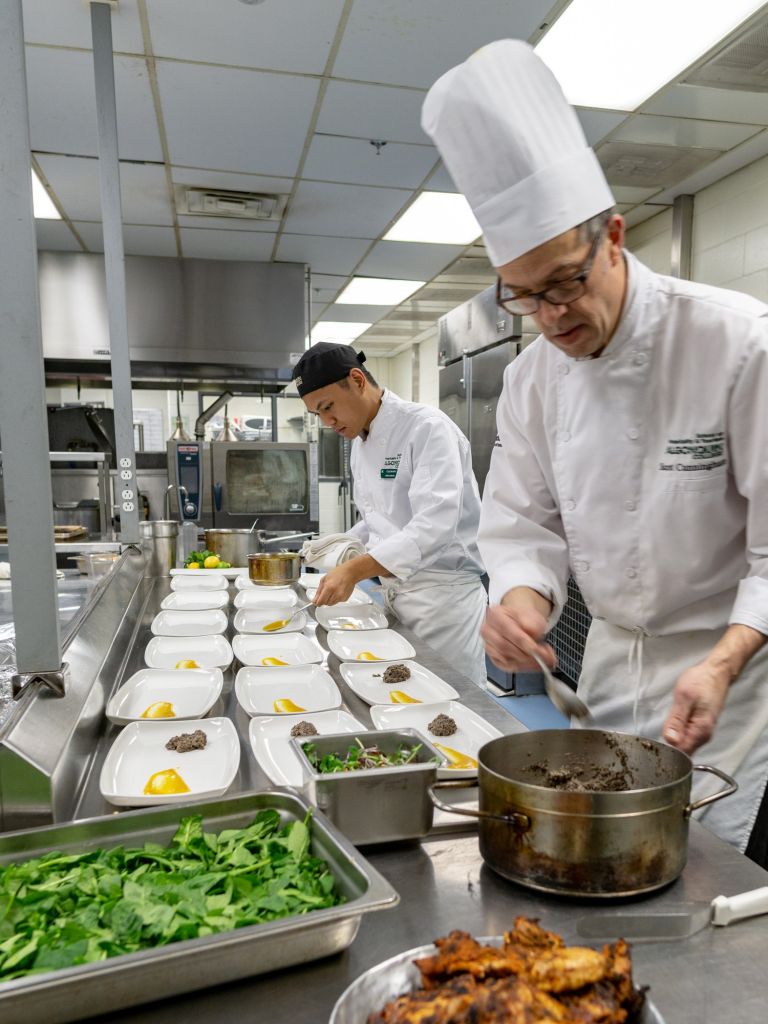The new Canada Food Guide has officially been released, which will be the most recent alteration to the guide since its inception in 1942.
The changes to the guide, however, won’t be resulting in changes to the food offerings at Algonquin’s teaching restaurant any time soon.
Cory Haskins, a culinary coordinator and professor at Algonquin, said that changes will not affect the menu at the Restaurant International. He noted that any changes would come from long-term customer demands.
“It will be society that will be pushing for culinary changes. So as the customer starts saying, ‘I would like to have more vegan things on the menu,’ then they make those changes.
“We won’t be looking at the new food guide and saying ‘Ok we need to change everything,’ Haskins said.
Originally designed to address nutritional deficiencies during wartime rationing, the guide has been amended to better serve the nutritional needs of Canadians. However, the guide has naysayers.
Opponents point to the impact that agricultural lobbyists have had in past versions of the food guide, most notably the 1992 changes that saw the recommended servings of meat and dairy increased due to lobbyist pressure.
Tony Greco, a prominent Ottawa trainer and fitness expert, is a fan of the Canada Food Guide, but stressed that it’s simply a guide for eating well.
“It definitely has improved a lot, some of the changes from the past,” Greco said. “I think people are becoming more educated with certain foods, what they do and how the body absorbs them.”
Greco reinforced that the guide exists to aid in better food choices.
The new guide has done away with the four traditional food groups, opting for recommendations that promote a higher consumption of fruits and vegetables, with a smaller emphasis on meats and dairy products.
The guide was officially presented to the public by health minister, Ginette Petitpas Taylor, on Jan. 22, 2019.


